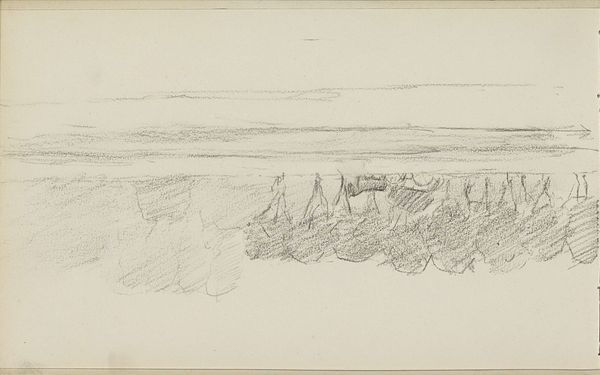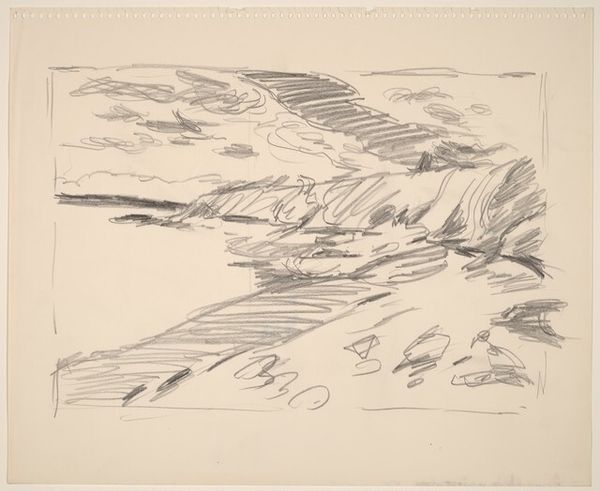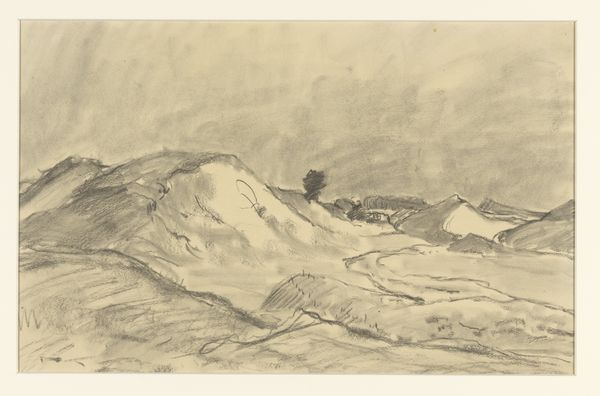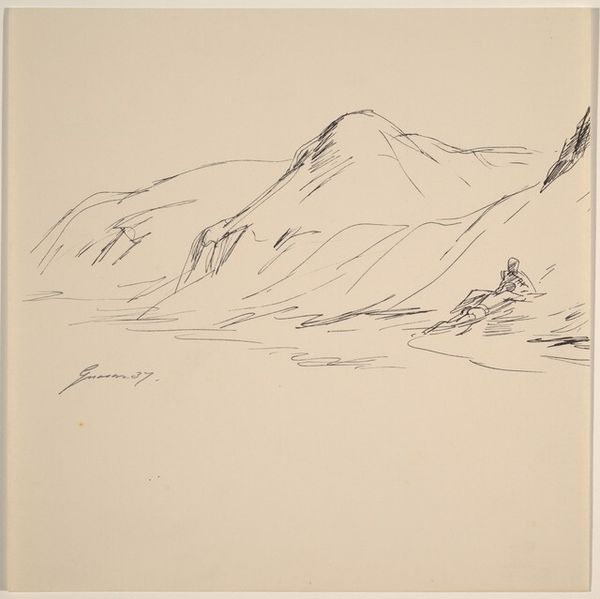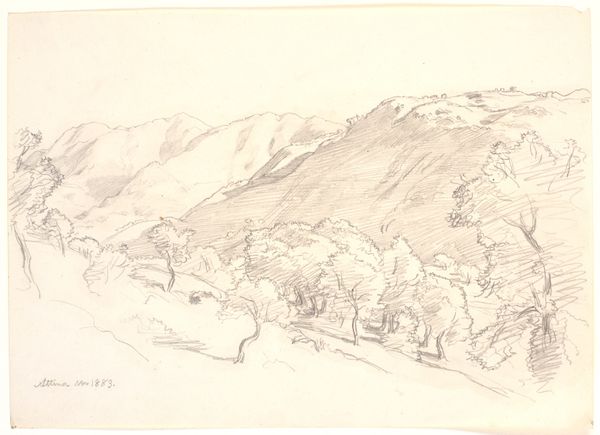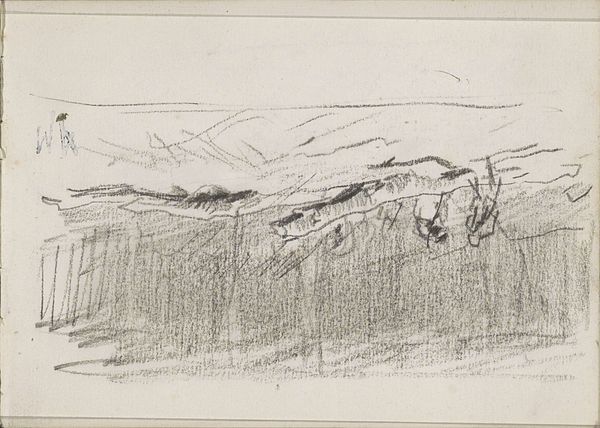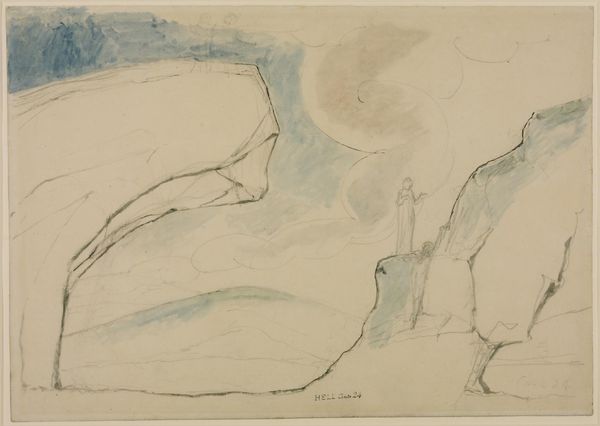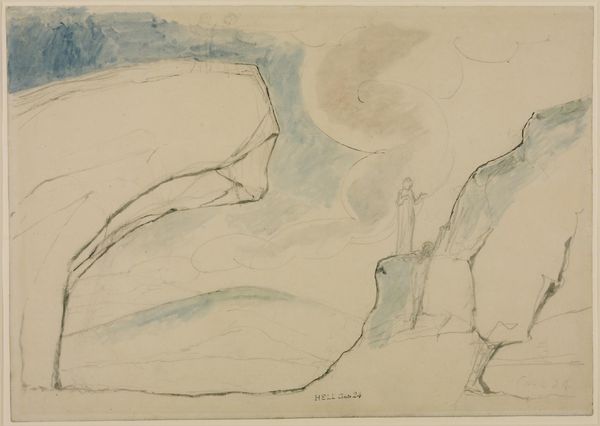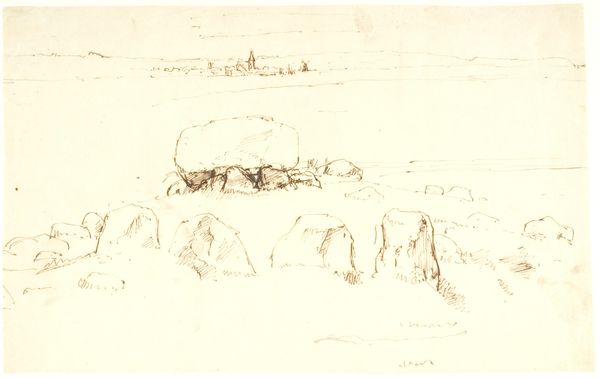
Dimensions: support: 641 x 768 mm
Copyright: CC-BY-NC-ND 4.0 DEED, Photo: Tate
Curator: This is Henry Bishop's "Shakespeare's Cliff, Dover," painted sometime between 1868 and 1939. It captures the iconic white cliffs in oil on canvas, currently held in the Tate collection. Editor: It's instantly evocative; the choppy water and towering cliffs project a powerful sense of isolation and the sublime. I feel the symbolic weight of borders and historical crossings. Curator: Absolutely. Dover, through Shakespeare, has become intrinsically linked with themes of power, invasion, and national identity. Bishop's muted palette underscores the somber socio-political resonances. Editor: The cliffs themselves, those chalky giants, represent endurance, resilience. They've witnessed centuries of human drama, embodying a constant, silent narrative. Curator: And the sea? A fluid boundary, contested space, echoing the struggles for control and the movement of peoples throughout history. Editor: This image is far more than just a pretty landscape; it's a potent symbol of England's complex relationship with the world. Curator: Indeed, it invites us to consider the land as both a stage and a character in the unfolding drama of human affairs.
